Figures & data
Figure 1. Geological map of the São Paulo Basin (original shapes compiled from http://geosampa.prefeitura.sp.gov.br/PaginasPublicas/_SBC.aspx) including NW-SE section modified from CitationAlmeida (1958).
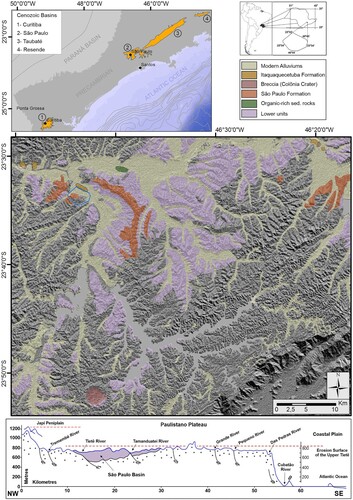
Figure 2. The main features of the São Paulo Formation in the area: A – well-sorted, fine-grained sand and clay with intense yellow colour signature; B – clasts of mottled clay; C – pebbly sand with clasts of mottled clay; D – small-scale cross stratifications; E – clastic dykes composed of medium-grained sand; F – limonitic cement within the São Paulo Formation in the area of the geological institute of the university.

Figure 3. Outcrop near to the main entrance of IPEN institute (field point FB – 102).
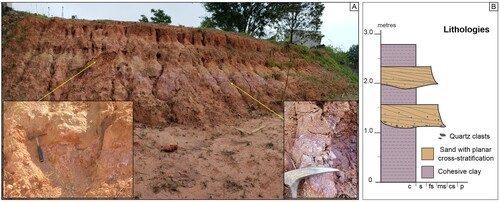
Figure 4. Sedimentary log of the unconformity between the São Paulo Formation and the Bosque Formation.
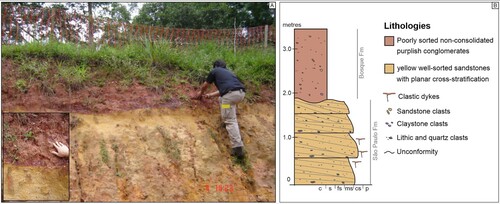
Figure 5. The main features of the Bosque Formation in the area: A, B and C – red-sediments with rusty aspects; D – organic-rich grey clays; E – peats deposits; F – facies exhibit intraformational clasts of red sand.
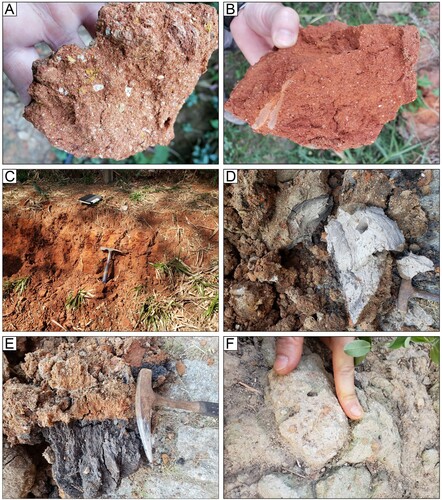
Figure 6. The main features of the Bosque Formation in the area: A, B and C – matrix-rich purplish non-consolidated conglomerates; D – matrix-rich purplish non-consolidated conglomerates containing carbonized wood interlayered with intermediate terraces; E – organic-rich grey-mud; F – structures recording commonly compacted clay clasts.
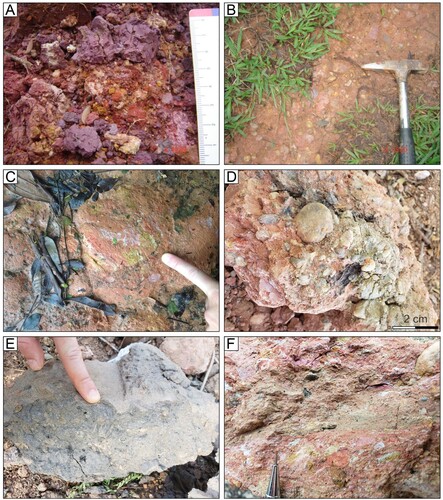
Figure 7. A and B – Contact between Basement and the Bosque Formation. C – Detail of clast composed of fine grained well sorted arenites with limonitic cement. D – Detail of clast composed of polymyctic breccias with matrix replaced by limonitic cement.
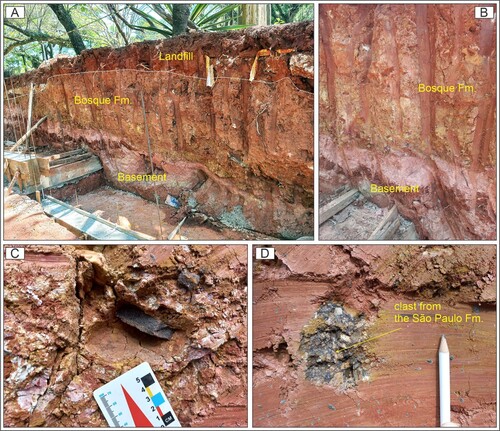
Figure 8. A – Historic geological section of the point that marks the foundation of the São Paulo city (Pátio do Colégio) coloured from the original picture made by CitationPissis (1842). 1 – yellow clay; 2 – mottled clay; 3 – quartz sandstone; 4 – red sandstones. B – Maps location and regional shape of the São Paulo Basin, points of monitoring wells compiled from http://siagasweb.cprm.gov.br/layout/; C – Isopach lines of the Bosque Formation; D – NNE-SSW geological cross-section and stations of the metro-line 1 within the São Paulo city (1 – Precambrian Basement; 2 – Lower units composed of very compact brownish medium-coarse sandstones with rare lenses of mudrock; 3 – Lower units composed of very compact greyish mudrocks with common lenses of sandstone; 4 – São Paulo Formation represented by yellow and mottled clay and siltstones with abundant lenses of well sorted fine-grained sandstones with framework often replaced by limonitic cement; 5 – Bosque Formation; 6 – Modern alluviums; 7 – Landfill; 8 – Expressive occurrence of limonitic cement; 9 – Debris from the São Paulo Formation highlighted by the accumulation of clasts of sandstones with limonitic cement; 10 – Monitoring-wells performed during the construction of the north-south subway line).

TJOM_A_2018367_Supplementarymaterial
Download PDF (6.2 MB)Data availability statement
Data openly available in a public repository that issues datasets with DOIs.
